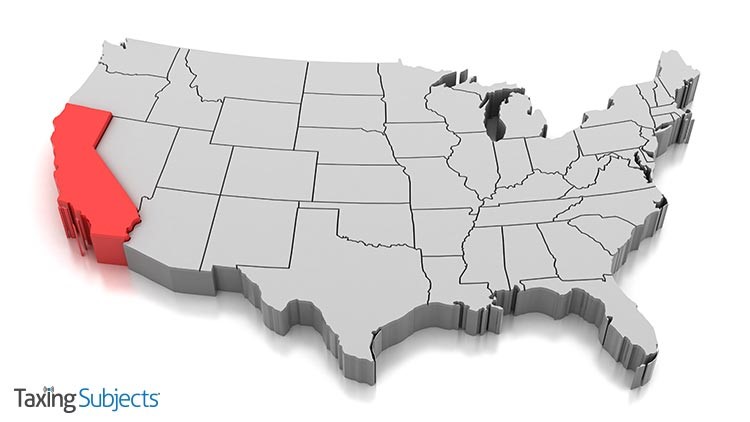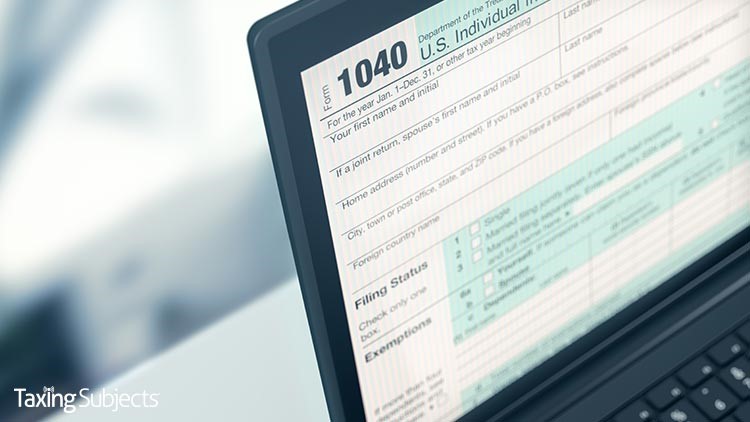by MEA Tax Advisors | Feb 26, 2021 | Tax Tips and News
Taxpayers with income from farming or fishing face a March 1 deadline for filing their income taxes. But the IRS reminds them they can avoid making any estimated tax payments by filing and paying their entire tax due on or before the deadline.
The rule generally applies if farming or fishing income amounted to at least two-thirds of the taxpayer’s total gross income in either the current or the preceding tax year.
To avoid an estimated tax penalty, taxpayers who don’t file by March 1 should have made an estimated tax payment no later than Jan. 15.
Refer to Publication 505, Tax Withholding and Estimated Tax for more information.
What do farmers and fishers need to file?
Taxpayers in the farming business report income and expenses on Schedule F (Form 1040), Profit or Loss From Farming. They also use Schedule SE (Form 1040), Self-Employment Tax to figure self-employment tax if their net earnings from farming are $400 or more. See Topic No. 554, Publication 225, Farmer’s Tax Guide and Agriculture Tax Center for more information.
Taxpayers in the fishing business report income and expenses on Schedule C (Form 1040), Profit or Loss From Business (Sole Proprietorship). They also use Schedule SE (Form 1040) to figure self-employment tax if their net earnings from fishing are $400 or more. For general information about the rules applying to individual taxpayers – including commercial fishermen who file Schedule C – refer to Publication 334, Tax Guide for Small Business.
Save time with IRS Direct Pay
IRS Direct Pay is a free online service. It allows people to make same-day payments or schedule them up to 365 days in advance from a checking or savings account.
There are no IRS fees and no pre-registration.
The service is available seven days a week, and users get immediate confirmation after the submit a payment. They can also opt-in to get email notifications.
Taxpayers should note, however, that IRS Direct Pay cannot be used to pay the federal highway use tax, payroll taxes or other business taxes. Taxpayers seeking to pay those business taxes electronically can enroll in the Electronic Federal Tax Payment System (EFTPS), which is also a free service.
For more information about payment options, check out IRS.gov/payments.
Source: IR-2021-42
– Story provided by TaxingSubjects.com
by MEA Tax Advisors | Feb 25, 2021 | Tax Tips and News
Unemployment claims may have fallen since the initial months of the pandemic, but millions of Americans continue to struggle with long-term joblessness and medical bills caused by the coronavirus. While a third round of federal Economic Impact Payments is expected this year, qualifying Californians will also receive a separate, state-issued payment: The Golden State Stimulus.
According to the “Golden State Stimulus” page on the State of California Franchise Tax Board website, most qualifying low-income California residents will automatically receive a $600 or $1,200 payment 45 to 60 days after filing their tax year 2020 state return—provided they file by Oct. 15, 2021 and meet other criteria.
Who qualifies for the Golden State Stimulus payment?
Generally, two groups of California residents can qualify for the Golden State Stimulus:
- CalEITC beneficiaries making $30,000 or less
- ITIN holders making $75,000 or less
Those who change their permanent residence to another state or country before the state actually issues a stimulus payment may not qualify, even if they would otherwise meet all other prerequisites.
Are there resources to help determine Golden State Stimulus eligibility?
The FTP site provides the following tables to help qualifying Californians determine the amount they are eligible to receive and what they should do to get a payment.
The first table shows how being a CalEITC recipient, ITIN holder, or joint filer can affect the amount of the stimulus payment:
|
Your stimulus amount
|
|
On your 2020 tax return…
|
Stimulus amount
|
|
You are a CalEITC recipient with an SSN
|
$600
|
|
You are a CalEITC recipient with an ITIN
|
$1,200
|
|
You are not a CalEITC recipient, but you:
- File with an ITIN and
- Made $75,000 or less (total CA AGI)
|
$600
|
|
You file a joint return and:
- At least one of you files with an ITIN
- Made $75,000 or less (total CA AGI)
|
$600
|
|
You file a joint return and:
- You are a CalEITC recipient
- At least one of you files with an ITIN
|
$1,200
|
The second table contains four scenarios that can affect stimulus eligibility, like qualifying for CalEITC but not claiming it on the 2020 return:
|
Scenarios for claiming the Golden State Stimulus
|
|
Scenario
|
What to do
|
|
You already filed your 2020 taxes and received a CalEITC refund.
|
You don’t need to do anything. You will receive your payment by direct deposit or paper check.
|
|
You filed your 2020 taxes with your ITIN and made $75,000 or less (total CA AGI).
|
You don’t need to do anything. You will receive your payment by direct deposit or paper check.
|
|
You filed your 2020 taxes but did not claim CalEITC and you’re eligible for CalEITC.
|
Amend your 2020 tax return immediately.
|
|
You will file a 2020 tax return but will not claim CalEITC.
|
You may still be eligible for the stimulus payment for 2020 if you (or your spouse):
- File with an ITIN and
- Made $75,000 or less (total CA AGI)
Be sure to file your 2020 tax return no later than October 15, 2021.
|
A final note: These stimulus payments are set to expire on November 15, 2021. That’s why the FTB recommends qualifying California residents file their 2020 return by October 15. Otherwise, they risk losing their payment.
For more information about the Golden State Stimulus, visit FTB.CA.gov.
Source: “Golden State Stimulus,” FTB.CA.gov/About-FTB/Newsroom/Golden-State-Stimulus/index.html
– Story provided by TaxingSubjects.com
by MEA Tax Advisors | Feb 24, 2021 | Tax Tips and News
Texas taxpayers impacted by this month’s brutal winter storms are getting some help from the Internal Revenue Service. The help includes extended deadlines and other relief measures.
The entire state of Texas is included disaster declaration issued by the Federal Emergency Management Agency (FEMA) and the IRS’ relief measures apply to all the counties in the FEMA declaration.
Any counties outside of Texas that are added to the disaster declaration will automatically qualify for the IRS relief package as well. The list of eligible counties and localities is available on the disaster relief page on IRS.gov.
Extension to file and pay
The tax relief announcement postpones various tax filing and payment deadlines that kicked in with the beginning of the filing season on Feb. 11. For Texas taxpayers, affected individuals and businesses now have until June 15, 2021, to file their returns and pay any tax originally due during the period.
The extension includes 2020 individual and business returns normally due on April 15, as well as the various 2020 business returns that would have been due on March 15. It also means affected Texas taxpayers now have until June 15 to make 2020 IRA contributions.
Also included in the relief package are quarterly estimated income tax payments normally due April 15, and quarterly payroll and excise tax returns normally due April 30. The extension also applies to tax-exempt organizations operating on a calendar-year basis, that have a 2020 return due on May 17.
Penalties on payroll and excise tax deposits due on or after Feb. 11 and before Feb. 26 will be abated as long as the deposits are made by Feb. 26.
The IRS disaster relief page has details on other return types, payments and tax-related actions qualifying for the additional time.
Tax relief is automatic
Taxpayers do not need to contact the IRS in order to qualify for the extensions and other relief. As long as the taxpayer’s address of record is in the federally declared disaster area, the extended deadlines are automatically applied.
If an affected taxpayer gets a late-filing or late-payment penalty notice from the IRS that has an original or extended filing, payment or deposit due dat that falls within the postponement period, the taxpayer should call the phone number printed on the notice to have the penalty abated.
An IRS statement says the agency is ready to help those taxpayers who may have affected by the winter storm but who live outside the current disaster area.
“The IRS will work with any taxpayer who lives outside the disaster area but whose records necessary to meet a deadline occurring during the postponement period are located in the affected area. Taxpayers qualifying for relief who live outside the disaster area need to contact the IRS at 866-562-5227. This also includes workers assisting the relief activities who are affiliated with a recognized government or philanthropic organization,” the IRS states.
Declaring losses
Individuals or businesses in a federally declared disaster area who suffered uninsured or unreimbursed disaster-related can claim them on either the return for the year the loss occurred (in this case, the 2021 return normally filed next year), or the return for the prior year. Taxpayers can, if they choose, claim these losses on the 2020 return they fill out this tax season.
Be sure to write the FEMA declaration number—4586—on any return claiming a loss.
The tax relief package is part of a coordinated federal response to the damage caused by this winter storm and is based on local damage assessments by FEMA. For more information on disaster recovery, visit disasterassistance.gov.
Source: IR-2021-43
– Story provided by TaxingSubjects.com
by MEA Tax Advisors | Feb 16, 2021 | Tax Tips and News
Filing season is finally here and for many tax professionals, the watchwords are speed and accuracy. The Internal Revenue Service says it can help with both.
The IRS is urging tax pros—and taxpayers—to take the simple steps needed to help ensure their returns are accurate, to speed up refunds and so avoid a number of pandemic-related pitfalls.
Their appeal isn’t new; every year the IRS encourages taxpayers to e-file their returns and to use direct deposit to get their refunds. But this year it’s extra-important to avoid delays.
By using their tax professional of choice, taxpayers can file electronically, safely and accurately. The IRS adds that paper-filed returns and paper checks will take even longer to process this year for a variety of reasons.
Now that filing has begun, taxpayers have until Thursday, April 15 to file their 2020 tax return and pay any tax due. The IRS expects to receive more than 160 million individual tax returns this year with nine out of 10 returns filed electronically. At least eight out of 10 taxpayers will get their refunds by direct deposit.
“The pandemic has created a variety of tax law changes and has created some unique circumstances for this filing season,” said IRS Commissioner Chuck Rettig. “To avoid issues, the IRS urges taxpayers to take some simple steps to help ensure they get their refund as quickly as possible, starting with filing electronically and using direct deposit.”
“Following months of hard work, we are ready to start this year’s tax season,” Rettig added. “Getting to this point is always a year-round effort for the IRS and the nation’s tax community. Doing it in a continuing COVID-19 environment while simultaneously delivering stimulus payments for the nation is an unprecedented accomplishment by IRS employees. I also want to thank all our tax partners and tax professionals for their hard work that makes tax time smoother for the nation. All of us stand ready to serve America’s taxpayers during this important filing season.”
Review tax changes to be tax-ready
Last year’s sweeping tax changes affected individual taxpayers and their families. But they also affect the tax returns they’re filing this year. A new IRS fact sheet explains what taxpayers need to know to file a complete and accurate tax return.
The IRS says it recognizes that filing this year could be challenging for some taxpayers, so it’s important to understand how to claim credits and deductions, to get a refund in a timely fashion and to meet all tax responsibilities.
Recovery Rebate Credit for those still eligible for Economic Impact Payments. Most people received Economic Impact Payments (EIPs) automatically, and anyone who got the maximum amount doesn’t need to include any information about the payments when they file.
However, those who didn’t get a payment—or only received a partial payment—may be eligible to claim the Recovery Rebate Credit when they file their 2020 tax return. Check out the guidelines for the credit for more information.
More language options available. This year marks the first time Forms 1040 and 1040-SR are available in Spanish. The IRS also now has a new form that allows taxpayers to request that they receive information from the agency in their preferred language. The Schedule LEP, Request for Change in Language Preference, allows taxpayers to request information in some 20 different languages besides English.
Don’t forget any retirement-plan distributions. Because of the pandemic, some taxpayers found it necessary to take early distributions from 401(k) plans and traditional IRAs in 2020.
Under the CARES Act, those distributions—up to $100,000—are not subject to the 10% additional tax that otherwise generally applies to distributions made before an individual reaches age 59 ½.
In addition, a coronavirus-related distribution can be included in income in equal installments over a three-year period, and an individual has three years to repay a coronavirus-related distribution to a plan or IRA and undo the tax consequences of the distribution.
Taxpayers should also note that they can make contributions to traditional IRAs until April 15, 2021, and still deduct that amount on their 2020 tax return, if eligible.
Deduction now allowed for charitable cash contributions. During a previous round of tax reform, deductions for contributions to charitable organizations went away for non-itemizers. That’s changed now, thanks to the CARES Act.
Taxpayers who don’t itemize can take a charitable deduction of up to $300 for cash contributions made in 2020 to qualified organizations. For this deduction, the qualifying organizations are limited to religious, charitable, educational, scientific or literary purposes.
As always, e-file is best. We’ve said it before: the safest and best way to file a complete and accurate tax return is to file electronically and use direct deposit. Both of these steps are where tax pros shine.
Most refunds are issued in less than 21 days, but some may take longer.
Refunds can be tracked by using Where’s My Refund? on IRS.gov or by downloading the IRS2Go mobile app. The app allows connected taxpayers to get a personalized refund date as soon as 24 hours after the return is submitted electronically.
For filers claiming the Earned Income Tax Credit or Additional Child Tax Credit, an update to Where’s My Refund? should show up by Feb. 22. Remember that the IRS cannot answer refund status questions unless it’s been 21 days since the return was e-filed.
Need more help?
IRS tax help is available 24 hours a day on IRS.gov, where people can find answers to tax questions and resolve tax issues online from the safety of their home. The Let Us Help You page helps answer most tax questions, and the IRS Services Guide links to other important IRS services.
For an in-depth perspective on how the IRS is preparing for a successful filing season, join Wage and Investment Commissioner and Chief Taxpayer Experience Officer Ken Corbin in his column, A Closer Look.
Source: IR-2021-35
– Story provided by TaxingSubjects.com
by MEA Tax Advisors | Feb 11, 2021 | Tax Tips and News
It won’t be long before the Internal Revenue Service opens its gates and the filing season will be officially underway.
In the meantime, though, there’s enough work to keep us all busy. That starts with taxpayers, who, if they haven’t done so already, should be gathering their records now. This includes all year-end income documents they have to help ensure they can file a complete and accurate 2020 income tax return and avoid refund delays.
The necessary records include W-2s, 1099s, receipts, canceled checks and any other documents supporting any income, deductions or credits on their return.
Many of the reporting forms should have already been received by taxpayers. These forms include:
- Forms W-2, Wage and Tax Statement
- Form 1099-MISC, Miscellaneous Income
- Form 1099-INT, Interest Income
- Form 1099-NEC, Non-employee Compensation
- Form 1099-G, Certain Government Payments; such as unemployment compensation or a state tax refund
- Form 1095-A, Health Insurance Marketplace Statements
Other steps to take now
It’s a good idea for taxpayers to look at their IRS account online before starting their own filing process, whether doing it themselves or using a tax professional.
This allows them to see the latest information about their federal tax account and most-recently filed tax return using a secure and convenient tool on IRS.gov. It’s especially handy if they need information from last year’s return.
Those with an account on IRS.gov can also see the amounts of any Economic Impact Payments the taxpayer has received. This can be helpful to eligible taxpayers who either did not receive any Economic Impact Payments – or got less than the full payments. They can then claim the recovery rebate credit on their 2020 federal tax return.
People can visit Secure Access: How to Register for Certain Online Self-Help Tools for more information about how to create an account or how to reset the username or password.
Don’t overlook unemployment benefits
We can’t stress this point enough: Unemployment compensation is taxable and must be included as gross income on a taxpayer’s return. As we mentioned, taxpayers should have already received a Form 1099-G, showing their unemployment income.
People can have federal taxes withheld from their unemployment benefits or make quarterly estimated tax payments, but a surprising number of taxpayers don’t do either one. In that case, taxes on those benefits must be paid when their 2020 tax return is filed. So those who didn’t have tax withheld from their unemployment payments could see a smaller refund than expected or could possibly even have a tax bill due.
Taxpayers who get a Form 1099-G for unemployment compensation they never received should contact their state tax agency and ask for a corrected Form 1099-G.
However, taxpayers should file an accurate return that includes the income they actually received.
States shouldn’t issue Forms 1099-G to taxpayers they know to be victims of identity theft involving unemployment compensation. Taxpayers who are victims of unemployment compensation-based identity theft should not file an identity theft affidavit with the IRS.
For more information, check out Tax Topic 418, Unemployment Compensation; Publication 525, Taxable and Nontaxable Income; and What Taxpayers Need to Know to Claim the Earned Income Tax Credit.
Source: COVID Tax Tip 2021-16
– Story provided by TaxingSubjects.com





